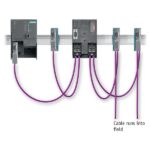Choosing the right diagnostic tool for your car can be a daunting task, especially when comparing popular options like VCDS (VAG-COM Diagnostic System) and OBDeleven. On the surface, OBDeleven often appears to be the more budget-friendly choice, particularly when initially looking at the upfront cost. However, a deeper dive into the pricing models and long-term expenses reveals a more complex picture, especially when considering the value each system offers. Let’s break down the nuances of “Vcds Vs Obdeleven” to understand where your money truly goes and which tool provides the best overall value for your needs.
Understanding the Pricing Game: CAPEX vs OPEX in Diagnostic Tools
When comparing VCDS and OBDeleven purely on price, it’s easy to see the initial appeal of OBDeleven. It often boasts a lower entry point, making it seem like the more economical option. However, this initial lower cost can be misleading when you consider the different pricing strategies employed by Ross-Tech (the creators of VCDS) and VOLTAS IT (the company behind OBDeleven).
To understand this difference, it’s crucial to grasp the concepts of CAPEX (Capital Expenditure) and OPEX (Operating Expenditure). Ross-Tech primarily utilizes a CAPEX model with VCDS. You purchase the VCDS software and interface, and that’s largely it. While there might be occasional updates or optional add-ons, the major cost is upfront. This is a traditional purchase model where you own the tool outright after the initial investment.
On the other hand, OBDeleven leans heavily towards an OPEX model. While the initial device purchase might be cheaper, the ongoing costs can accumulate over time. This is primarily due to their “Credits” system, which are required to perform certain advanced functions and coding procedures. Think of it like a subscription or a “pay-as-you-go” system for advanced features.
The Shareholder Perspective: Why OPEX Makes Business Sense
From a business standpoint, especially for a company like VOLTAS IT, the OPEX model offers significant advantages. While users might initially perceive a lower price as a saving, companies often view price disparities as potential “lost profit.” To combat this, businesses can choose to increase revenue through either CAPEX or OPEX strategies. OBDeleven’s approach clearly favors OPEX for several strategic reasons:
- Recurring Revenue: OPEX models generate consistent, recurring revenue streams. Unlike a one-time CAPEX purchase, OPEX, through credits or subscriptions, ensures a continuous income flow for the company. This predictability is highly valued in business planning and forecasting.
- Lower Initial Barrier to Entry: A lower upfront cost attracts a wider customer base. This increased user base then becomes reliant on the OPEX system (credits) for continued advanced functionality, further fueling the recurring revenue.
- Scalability and Flexibility: OPEX models are often more scalable and flexible. Companies can adjust credit costs, introduce new features requiring credits, and adapt their revenue streams more dynamically than with a purely CAPEX-based model.
In essence, while a user might see the lower initial OBDeleven price as a win, from the company’s perspective, it’s a strategic move to maximize long-term profitability through recurring operational expenses.
VCDS vs OBDeleven: Which Pricing Model Wins for You?
The “best” pricing model between VCDS and OBDeleven isn’t universally defined; it depends entirely on your usage patterns and needs.
-
VCDS – Ideal for:
- Professional Workshops: Garages and workshops that perform frequent and extensive VAG (Volkswagen Audi Group) diagnostics and coding. The upfront investment pays off with unlimited VIN usage and comprehensive functionality.
- Enthusiasts with Multiple VAG Cars: If you own several VAG vehicles and enjoy in-depth diagnostics and modifications, VCDS provides long-term value without recurring costs for each car.
- Users Prioritizing Unlimited Use: If you dislike credit systems or subscription models and prefer a one-time purchase for unlimited use, VCDS is the straightforward choice.
-
OBDeleven – Potentially Suitable for:
- Occasional DIY Users: For users who perform diagnostics and coding infrequently on a single or few vehicles, the lower initial cost and credit system might seem appealing.
- Users with Limited Budget Initially: If the upfront cost is a major barrier, OBDeleven’s lower entry price might make it more accessible initially.
- Users Comfortable with Credit Systems: If you are comfortable managing and purchasing credits as needed, and your usage is light, OBDeleven could be cost-effective in the short term.
However, it’s crucial to realistically assess your long-term needs. If you anticipate frequent use or require advanced functions regularly, the credits for OBDeleven can accumulate quickly, potentially making VCDS a more economical choice over time. The initial “saving” with OBDeleven might diminish as you repeatedly purchase credits for various tasks.
Conclusion: Value Beyond the Price Tag
Ultimately, the choice between VCDS and OBDeleven goes beyond just the initial price tag. It’s a decision between different pricing philosophies and usage models. VCDS offers a traditional, upfront investment for unlimited, professional-grade diagnostics, while OBDeleven presents a lower initial barrier but relies on an ongoing OPEX system through credits. Understanding these fundamental differences and honestly evaluating your diagnostic needs will lead you to the tool that provides the best value and long-term cost-effectiveness for you.
